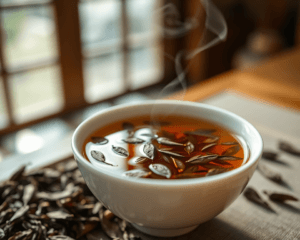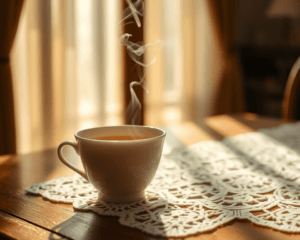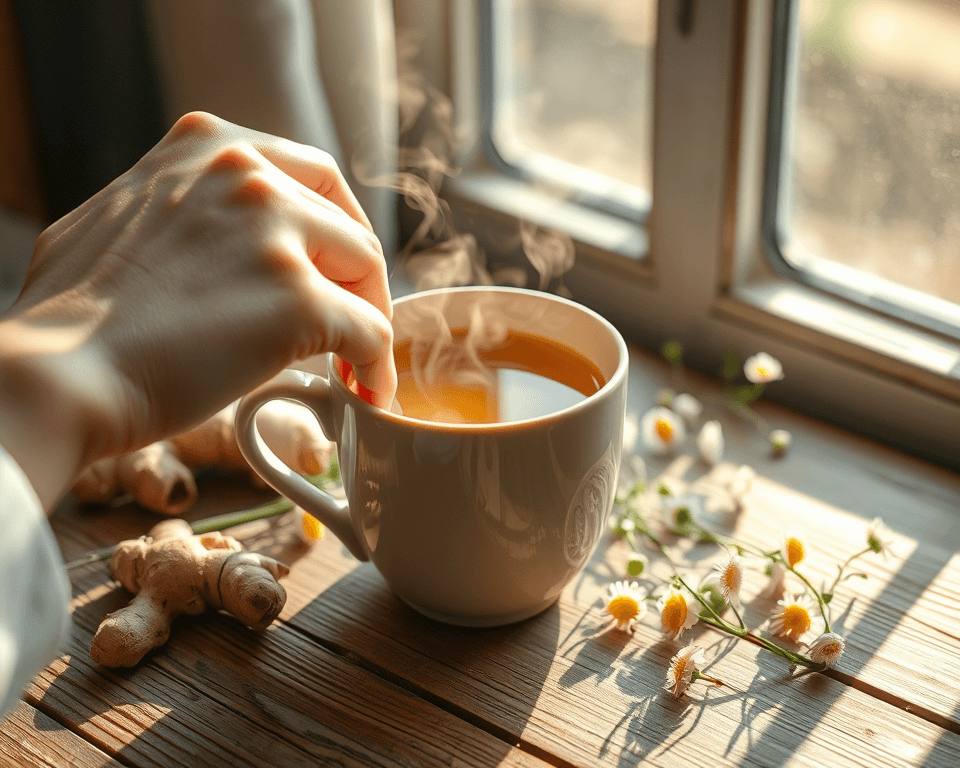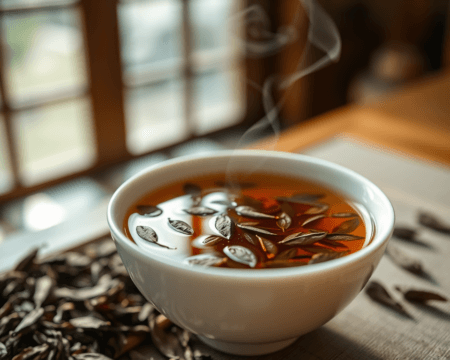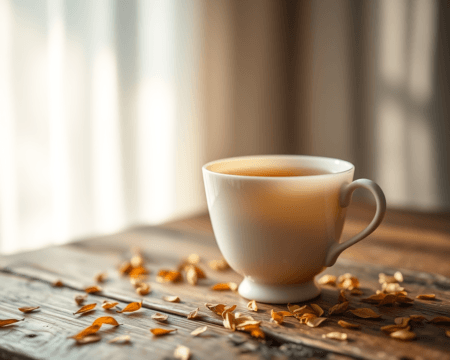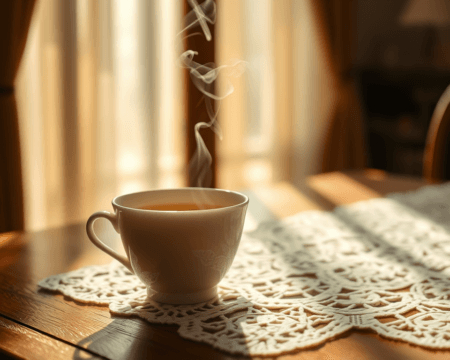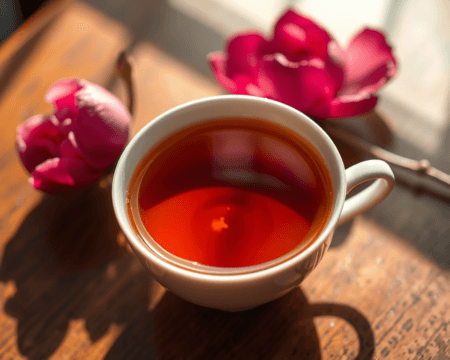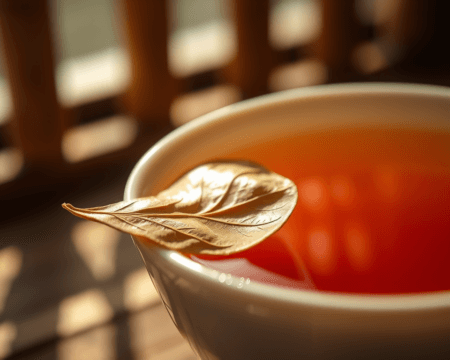You ever feel like you’re on a rollercoaster of discomfort, alternating between feeling like you’re melting and then shaking like a leaf? Yeah, fever and chills can be a real nightmare. Nobody wants to be stuck in bed, feeling awful, while wishing for relief. But I’ve got something for you that can help—tea. Not just any tea, but some of the best types that can soothe your symptoms and kickstart your recovery.
Key Takeaways
- Teas like chamomile and ginger have specific properties that elevate your comfort level when battling fever and chills.
- Hydration is crucial; herbal teas serve as both a remedy and fluid intake to support recovery.
- Know how to prepare these teas right; brewing techniques can amplify their healing benefits.
Understanding Fever and Chills
What Causes Fever and Chills?
Let’s get real. Fever and chills don’t just pop up out of nowhere. They signal something—usually your body saying, “Hey, I’m fighting off an infection!” An elevated body temperature is a classic immune response when your body senses trouble, like inflammation from a viral illness. Your body’s throwing a party to fight off those invaders, but that party can leave you feeling out of sorts.
So, the next time your temperature spikes or you’re shivering under a thousand blankets, remember: your body is on the front lines battling whatever nasty germs are trying to crash the party. Understanding the causes of fever can put you in a better position to combat those chills you’re feeling.
The Role of Hydration in Recovery
Now, here’s where it gets interesting—hydration. You might be thinking, “Why does that matter?” It’s simple: staying hydrated is essential when you’re under the weather. Fluids for fever help regulate your body temperature and keep your immune function in check.
Let’s talk tea. Drinking herbal teas isn’t just about comfort; they help you keep your body hydrated and can even pack a punch against those pesky chills. So grab that mug and sip away! Remember, optimal hydration strategy includes herbal hydration—think about how tea can provide both warmth and fluid intake when you need it most.
Effective Types of Tea for Fever and Chills
Popular Herbal Teas and Their Benefits
Here we go! If you’re looking for the superstars of herbal teas, you’ve got to check out a few that stand out.
Chamomile Tea: This one’s a classic. It’s known for its calming properties, but did you know it can help reduce fever? Chamomile is packed with antioxidants and has anti-inflammatory properties, making it effective for when you’re feeling particularly achy.
Ginger Tea: Get ready for a spicy kick! Ginger is well known for its anti-inflammatory properties, and it’s also great for reducing nausea. Just imagine brewing a cup of ginger tea, feeling that warmth envelop you while it works its magic on those chills.
Peppermint Tea: Feeling cold and sweaty isn’t fun, but peppermint is here to save the day. The menthol in peppermint can help you breathe easier, reduce fever, and give you that cooling sensation your body craves during chill spells.
Echinacea Tea: When it comes to boosting your immune system, echinacea is like the knight in shining armor. This powerhouse herb helps your body fend off infections and can be especially useful if your fever is the result of a viral illness.
Lesser-Known Teas That May Help
Don’t sleep on the lesser-known teas. These hidden gems can do wonders when it comes to taking the edge off a fever.
Hibiscus Tea: You probably see hibiscus tea hanging out on trendy café menus. It’s not just pretty; it also has properties that may help lower body temperature and improve heart health. Plus, it’s delicious and refreshing!
Elderflower Tea: Now, here’s a tasty one. Elderflower can aid respiratory health and help fend off fevers. This tea has a slightly sweet flavor and is another excellent choice for immune support.
Rooibos Tea: Looking for caffeine-free options? Rooibos is your buddy. Being rich in antioxidants, it supports your immune system without the jitters.
Yarrow Tea: Often overlooked, yarrow can help with those fever symptoms. It’s known for promoting sweating, which can assist in cooling your body down.
How to Prepare and Use Tea for Maximum Effect
Preparation Methods for Each Tea
Alright, you know what teas to consider, but how do you actually brew them for optimal effects? Let’s break this down.
Chamomile Tea: Use boiling water (around 200°F). Steep the flowers for about 5 minutes. Strain and enjoy! Want to enhance the flavor? A little honey goes a long way.
Ginger Tea: Slice fresh ginger, drop it into boiling water, and steep for 10 minutes. You can throw in some lemon for an added zing.
Peppermint Tea: Brew those leaves in boiling water for about 5-7 minutes. Fresh leaves will give you the best flavor, but bagged versions work too.
Echinacea Tea: Use boiling water and steep for 10 minutes. It’s best taken at the onset of symptoms.
Hibiscus Tea: Boil water and steep the dried flowers for about 5-6 minutes for a fresh flavor.
Table: Quick Brewing Guide
| Tea Type | Brewing Time | Water Temperature | Notes |
|---|---|---|---|
| Chamomile | 5 min | 200°F | Add honey for taste. |
| Ginger | 10 min | Boiling | Add lemon for zing. |
| Peppermint | 5-7 min | Boiling | Fresh leaves control flavor. |
| Echinacea | 10 min | Boiling | Best when symptoms start. |
| Hibiscus | 5-6 min | Boiling | Enjoy hot or iced! |
Dosage and Frequency of Tea Consumption
Now that you know how to prepare your teas, how much should you drink? Well, generally speaking, aim for 2-3 cups daily during illness. This isn’t just about enjoyment; it’s getting that body hydrated and primed for recovery.
Depending on the tea type, any more than this could just be overdoing it. For example, ginger can have potent effects and might upset your stomach if taken excessively. Common sense prevails here: listen to your body.
Pro-tip: Try to drink your tea warm—not scalding hot—so you can reap the benefits without any risk of burns. And scheduling those cups throughout the day helps keep your hydration in check.
Personal Anecdotes and Cultural Insights
Personal Stories of Tea Usage for Illness
Let me share a quick story. A buddy of mine was bedridden with a nasty flu. He couldn’t stop shivering, and his usual go-to medications weren’t cutting it. I swung by with a thermos of ginger and chamomile tea. After a couple of cups, he told me he could feel the warmth spreading through him and a slight easing of those chills. It wasn’t magic; it was understanding his body’s needs and responding with simple herbal teas.
Cultural Perspectives on Tea as a Remedy
Tea isn’t just a trendy drink; it has cultural significance everywhere—especially in healing traditions! In many Asian cultures, tea helps in cooling the body, while in others, it’s seen as a way to bond over shared wellness journeys. In some indigenous practices, herbs are brewed together in ways that reflect a community’s relationship with nature.
Exploring these traditions can open your eyes to how tea is tied to health across cultures. It shows you just how many folks have found relief and comfort from fever and chills for generations through something as simple as a cup of tea.
Recovery isn’t just about feeling better; it’s about connecting those experiences over warm, soothing cups. So whether you’re steeping chamomile in the U.S. or sipping hibiscus in Egypt, remember you’re part of a larger story every time you brew that perfect cup.
So, the next time you feel those chills creeping in, grab for your favorite tea. Feel that warm hug in a mug wrap around you and remember: you’re giving your body the support it needs. Keep it simple, keep it warm, and keep sipping!
Frequently Asked Questions
What types of herbal teas are best for fever and chills?
Herbal teas such as chamomile, ginger, peppermint, and lemon balm are excellent for alleviating discomfort during fever and chills. These teas have soothing properties that help reduce symptoms and promote relaxation.
How does hydration from herbal teas help with recovery?
Staying hydrated is essential during illness, and herbal teas not only provide hydration but also deliver beneficial compounds. They help to maintain fluid balance, support the immune system, and flush out toxins, contributing to faster recovery.
Are there any side effects of drinking herbal teas while sick?
Generally, herbal teas are safe to consume; however, certain herbs may interact with medications or cause allergic reactions. It’s advisable to consult a healthcare professional, especially for pregnant women or those with existing health conditions.
How can I enhance the effectiveness of herbal teas?
To boost the healing benefits, consider adding honey for its antimicrobial properties, or lemon for Vitamin C. Breathing in the steam from hot tea can also help alleviate nasal congestion.
Can I drink herbal teas if I have a sensitivity to caffeine?
Yes, herbal teas are naturally caffeine-free, making them suitable for individuals with caffeine sensitivity. They provide a warming and comforting effect without the stimulating properties of traditional teas or coffee.
How should I prepare herbal teas for maximum benefits?
To optimize the health benefits of herbal teas, use fresh herbs or high-quality dried herbs. Steep them in boiling water for 5-10 minutes, covering the cup to trap beneficial compounds, and strain before drinking.
How often can I drink herbal teas when feeling unwell?
You can drink herbal teas several times a day as needed, listening to your body and adjusting based on your comfort level. Maintain hydration by pairing tea with plenty of water for the best results.
Is there a specific temperature at which to drink herbal teas?
It’s best to drink herbal teas warm, as hot beverages can help soothe a sore throat and promote relaxation. However, avoid consuming them too hot to prevent burns and discomfort.
Can herbal teas replace conventional medicine?
While herbal teas can provide comfort and support during illness, they should not replace prescribed medications or treatments. Always consult a healthcare professional for advice on managing health conditions.

